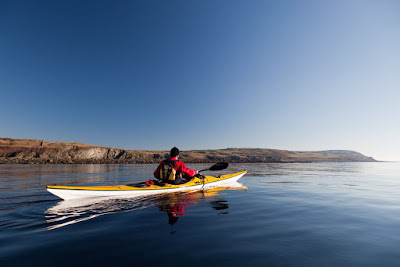We had enjoyed our sojourn in the Isle Whithorn so much that, by the time we left, the whitewashed houses had a pink glow from a sun that was already sinking in the west.
On leaving the harbour we turned our backs to the sun and turned east...
...into the broad expanse of Wigtown Bay.
We made for Cruggleton Point...
...which is topped by the remains of Cruggleton Castle.
By now the sun was setting and a cold sundowner got up from the east.
Rigg Bay, with its large tidal range, has some similarities to the Normandy coast and was the site chosen to develop the Mulberry harbour modules used in the D Day landings in WW2. Several modules are sunk in the bay.
We landed at Garlieston as the last pink glow of the day left the sky. We witnessed a magnificent display by a huge flock of starlings coming into roost. Now we had to find our way back to Port William in the dark!












































